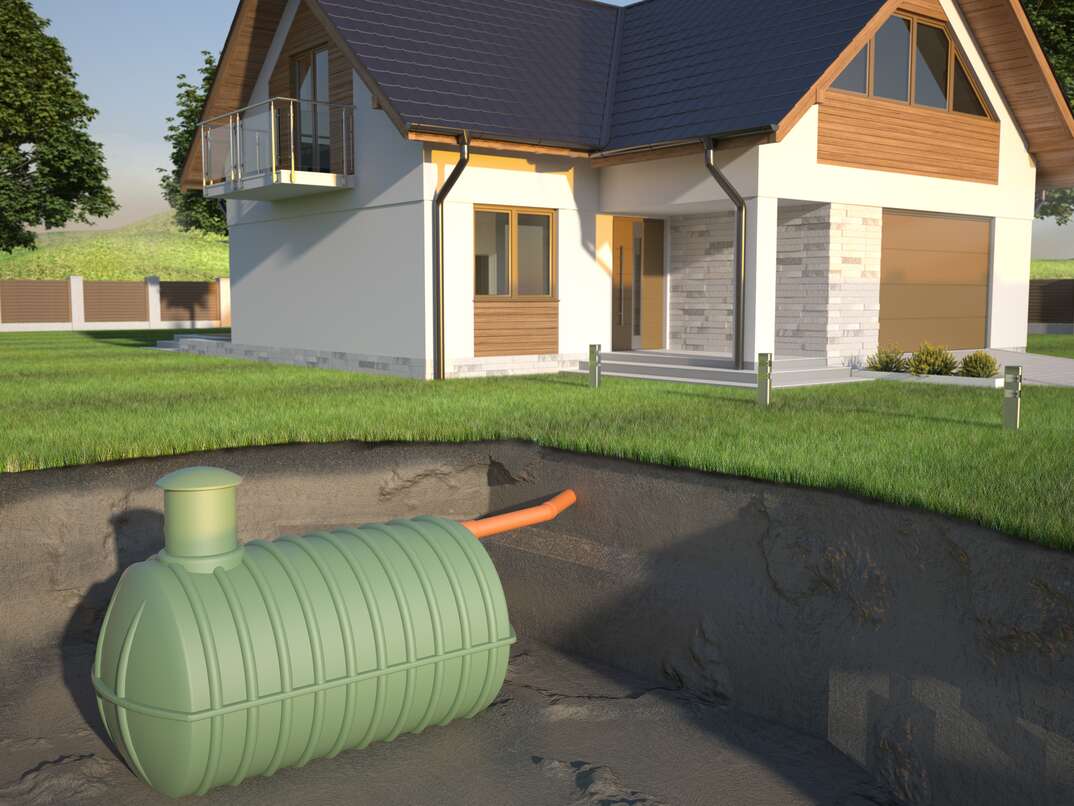Certain aspects of homeownership are not noticed until they require attention. The septic tank is just one very important, but often neglected part of a house. We tend to assume it is a given as it is assumed to carry out its duties without much maintenance or worry. Like any other type of system, septic tanks also have an expected lifespan and, eventually they’ll require replacement.

The expense of replacing the septic tank can pose an immense financial burden on homeowners who aren’t prepared. It is vital to realize that there are many variables that affect the cost of a septic tank.
In order to determine the true cost of a new septic system, it is important to take a look at more than the price. It’s not merely about replacing the tank with a brand new one. More than that, a variety of elements and services are a part of the overall cost. Each step, from obtaining permits to hiring contractors and digging to the installation will cost money. Homeowners should budget accordingly.
The expense of replacing the septic system, which includes the installation costs for the leach field as well as an septic system is an important aspect. The price of a new tank may vary greatly based on the dimensions and material of the tank as well as the complexity of installation. Costs is also affected by the site of the property, local laws and soil conditions. It is essential to speak with septic system experts who can analyze your particular requirements and give you an accurate estimation. Experts will take into consideration elements like the size or shape of the leach fields in order to give an accurate estimation of your total septic system costs.
Apart from the tank another major expense is the leach field, also known as a drainfield. This is a crucial component for water treatment and distribution. The cost of replacing a leach field that has been damaged or is not working can be substantially increased with thorough planning. In determining the total expense, it’s crucial to consider aspects like the size and composition of the leach fields, their accessibility, and the soil composition.
homeowners should consider the cost for replacing the tank for septic. The process could disrupt your daily life, requiring you to temporarily vacate your property or limit water usage during the installation. This inconvenience should be incorporated into your planning as they could affect your routine and potentially lead to additional costs like accommodation costs or changes to your daily routine.
It’s important to remember that maintaining your septic tank on a regular basis is vital to extend its life and reducing the chance of a premature replacement. Inattention to maintenance can lead to bigger problems in the future, including damages to the drainfield or failure of the tank. Planning for maintenance of septic systems is an investment you can make that will help you save money in the long run.
By now, you may have realized that determining the septic tank replacement cost is not a straightforward task. It is a careful analysis of several factors, from the dimensions and materials of the tank to the complexity of the installation as well as the state of the leach field. The location of your property and local rules will influence the total cost. It is essential to speak with experts with experience in the replacement of the septic system.
If you’re looking to replace your septic system, you may be shocked to discover there’s hidden costs that you may not have thought of. The costs can quickly add to the point that you need to be aware before making any decision.
Here are a few of the hidden costs involved in replacing an septic tank:
The costs of inspections and permits. The local government may require permits prior to beginning the process of replacing your Septic systems. These permits may be costly and you may need to pay additional for inspections.
The cost for excavation and removal. Before the new system can installed, it is required to take down and excavate the previous system. It can be a costly procedure, particularly if the old system is in a difficult-to-access area.
The expense for backfilling and leveling. The remaining hole after removing the old system will have to backfilled and graded. It is crucial that the new drainage system drains properly.
Cost of landscaping. You might need to plant a garden in your area following the installation of the new system in order to keep it neat and tidy. It can be expensive, especially if a landscaper is required.
It’s essential to account for the hidden costs when budgeting for the replacement of your septic system. This way you’ll stay clear of any unexpected costs in the future.
Eco-friendly septic systems are a great option for homeowners who have only a small budget. These eco-friendly septic solutions are not only cost-effective alternatives to conventional systems, but also to protect the environment by reducing water runoff and pollution. Eco-friendly septic systems are also becoming more affordable and accessible and are a great option for anyone seeking to lessen the impact on the environment of their property without running out of money. Although there are some initial costs associated with changing to an eco system, the savings in time will more than compensate for the initial costs. Green living is not just a fashion, it’s an important lifestyle choice that every person should consider if they want to ensure the sustainability of our world. With the proper system put in place, you’ll give yourself peace of mind knowing that you’re doing your part to benefit the world at large, as well as guaranteeing that your home can function effectively and efficiently without the need for maintenance, and a lower cost per month.